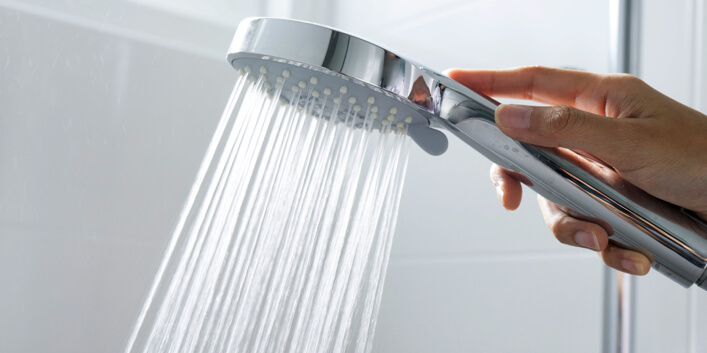5 Ways to Reduce Water Usage
Posted On: November 2, 2020

Do you know the second-largest energy expense in your home? Congratulations if you guessed it involves water. Heating your home’s water accounts for almost 20% of a typical utility bill. When you reduce your water consumption, you also reduce your need for hot water and the associated electricity costs. It’s also a lot better for the environment. Here are five tips to reduce water usage and save more energy while you’re at it.
1. Get a handle on drips and leaks.
Did you know just one drop of leaking water per second will waste more than 1,600 gallons of water per year? One of the easiest and most effective ways to save water is to fix those leaking faucets. Many times, the fix is as simple as changing out a rubber washer or tightening a sink connection. Look for quick-fix DIY tutorials online or ask for help at a local home improvement store.
2. Reduce water usage in the shower.
One shower can use 10 gallons of hot water, or more, depending on how hot and how long you’re in there. Have a large family in the home? Chances are, you’re using a lot of hot water. Limit your shower time, and consider taking colder showers, to cut down on the number of gallons consumed. Want to make saving water fun for kids? Set a timer and have them beat the clock before the buzzer rings. (This works for grown-ups, too.)
3. Go low-flow.
Keeping on the topic of showers, how long has it been since you updated your showerheads? Newer low-flow showerheads use a fraction of the water used by older units. Look for a flow rate lower than 2.5 gallons per minute (gpm). You’ll find this number listed on the packaging. If you’re not sure whether your current showerhead is low-flow or not, place a gallon bucket under the showerhead, turn on the shower and see how fast the bucket fills. If it takes less than 20 seconds, it is definitely not low-flow. Time to get a replacement.
4. Run full loads.
Running your dishwasher or washing machine when it’s less than full can be a huge drain on your hot water heater. Even if you use cold water in the washer (and that’s a good idea), a half load will use just as much energy as a full load. Wait until you have a full load of laundry or dishes before you press the start button. And if you’re worried about leaving dirty dishes in the dishwasher, most newer appliances have a rinse-and-hold cycle that keeps dishes from getting stinky even if they sit overnight.
Here’s a bonus way to reduce water usage with the dishwasher: don’t pre-rinse dishes. That’s right. It takes about 20 gallons of water to rinse a load of dishes before putting them in the dishwasher. Almost all models made since the 1990s were built to wash without pre-rinsing, so go ahead and skip that step.
5. Consider an upgrade.
If you do have older appliances, now might be a good time to update them. Look for Energy Star rated appliances and choose the most efficient models you can afford. You can do more than replace your dishwasher, though. The United States Environmental Protection Agency has developed a WaterSense labeling program to help you find water-efficient toilets, faucets, sprinklers and more. Making a few simple upgrades can add up to noticeable savings on your utility bills.
Want even more energy-saving ideas? Check out our post with energy-saving tips for every room of the house. As you start to reduce water usage, you can also lower electricity usage throughout your home.